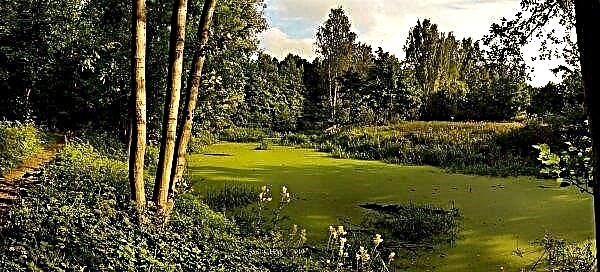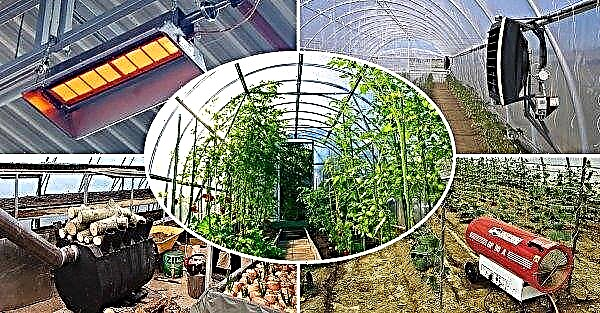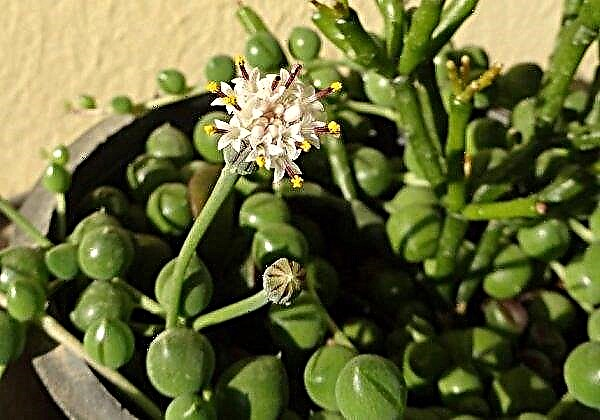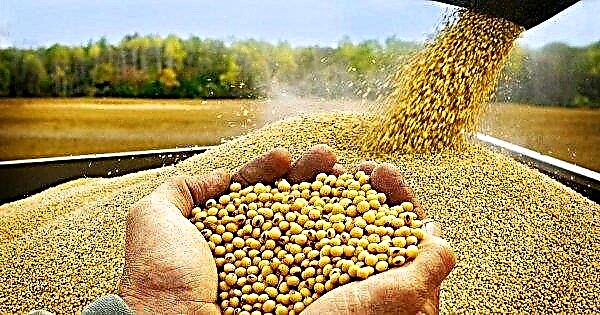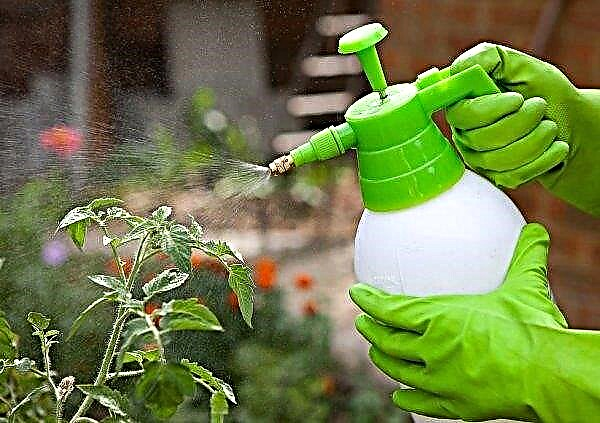Growing roses from seeds is a rather time-consuming process that requires a lot of patience and quality care for seedlings, sprouts, and then the rose bush. This article will describe the most important points in the preparation of planting material, planting and seedling care procedures that will help to successfully grow a home rose by sowing seeds.
Is it possible to grow a rose from seeds at home?
As a rule, roses are propagated by cuttings, however, this is not the only way to obtain new copies of this species. At home, roses can be planted by collecting and drying their seeds. Like all plants with seed, a new generation can be planted by planting it in fertile soil. It is worth noting that the process of sowing, caring for seedlings and waiting for seedlings is quite lengthy and requires attention and painstaking work, therefore it is not so popular and widely known.
Pros and cons of growing roses from seeds
- The benefits of growing roses in this way include:
- strong and powerful rhizome, which provides good vitality of rose bushes;
- frost resistance. Even in the case of severe frosts, when the outer part of the bush suffers, the plant can recover on its own, since the roots are strong enough;
- fast germination;
- viability of cuttings.
- The disadvantages of this method of breeding flowers are the following points:
- only full seeds can rise;
- waiting for seedlings and getting the first sprouts takes a lot of time;
- it is impossible to grow a hybrid species;
- a limited number of varieties of roses that can be propagated in this way.
The basic rules for planting roses
Planting seeds of a rose bush must be carried out, taking into account the peculiarity of this sowing material.
Important! Rose seeds sprout poorly, and their seedlings need to wait a long time.
However, experienced gardeners argue that prolonged dormancy of seed at low temperatures helps to accelerate rooting and more active emergence of seedlings.
This requires:
- Sow the material in open ground until the first frost, in the middle or end of autumn.
- To land in early spring, when the earth has not yet warmed up after winter frosts.
- Plant seeds at the end of winter in pots for seedlings at home.
Preparatory work
Before embarking on planting roses, you need to monitor the quality of the seed, which:
- You can buy or order in a store specializing in the sale of everything necessary for growing garden and home plants;
- to collect independently from the favorite rose bushes.
 Of the seeds purchased in finished form, they often receive small shoots and roses have small buds. Self-assembled and properly processed planting material, gives larger pink flowers.
Of the seeds purchased in finished form, they often receive small shoots and roses have small buds. Self-assembled and properly processed planting material, gives larger pink flowers.In order to assemble them yourself, you must:
- so that the fruits on the bush turn red (on average, from the end of June);
- pick beautiful, whole fruits, excluding dried and rotten, which cannot be used for sowing;
- cut each fruit and extract all seeds from it, peeling them from the pulp;
- high-quality seeds are pale red in color and seem to be immature. It is worth noting that in one box there may be seeds of different shapes, but this does not affect their quality.
Important! Seeds from unripened fruits germinate easier and have a more powerful germination and growth force, therefore they are harvested before the beginning of autumn, until the completion of their final ripening.
Preparation of capacity and soil for planting
To plant rose bush seeds, you need to take care of quality soil. To do this, you can use:
- a special universal substrate for seedlings, sold in a flower shop;
- to prepare the landing mixture with your own hands.
 Homemade substrate should contain:
Homemade substrate should contain:- turf or garden land;
- coarse sand;
- lowland peat.
Planting rose seeds is convenient:
- into cassettes;
- peat tablets;
- landing boxes.
 They avoid the need for picking and make it possible to sow unplanted seeds.
They avoid the need for picking and make it possible to sow unplanted seeds.Seed treatment
The preparation of planting material involves such manipulations:
- In order to preserve the seeds and prevent them from decaying, immediately after removing them from the fruit box, they are washed, and placed in gauze or a sieve, immersed in a solution of hydrogen peroxide for 20-30 minutes. This procedure will disinfect planting material and prevent mold.
- After this time, a substrate impregnated with a solution of peroxide is formed for them. To do this, 2 parts of a paper towel, cloth or cotton pad are moistened in the indicated liquid and seeds are laid out between them.
- Planting material for further savings is laid out in separate packages along with the substrate. The bag should close well to prevent the liquid from evaporating quickly.
To accelerate germination, the substrate is sent to the refrigerator, immersing the packets in the compartment, with a temperature not exceeding + 5 ° C. This will allow to carry out the stratification procedure - imitation of natural conditions in the winter in the natural habitat.Important! A package with seeds must be marked, indicating the date of collection of planting material, the beginning of its stratification and the grade of rose bush.
 This treatment lasts 2 months. The condition of the substrate with the seeds should be monitored regularly to exclude the possibility of mold. If traces of it were found, it is necessary to rinse the contents of the package and place it in a new, saturated substrate. It is also necessary to ventilate the substrate and additionally moisten it if the moisture has evaporated.
This treatment lasts 2 months. The condition of the substrate with the seeds should be monitored regularly to exclude the possibility of mold. If traces of it were found, it is necessary to rinse the contents of the package and place it in a new, saturated substrate. It is also necessary to ventilate the substrate and additionally moisten it if the moisture has evaporated.However, this is not the only method of stratification that can affect the rate of emergence of rose bush shoots. A longer option involves preparing the seeds for 8 months. After receiving the seeds, they are mixed with wet sand and placed in containers, for this you can use boxes, and sent to the basement. The air temperature in this room should be +3 ... + 5 ° C. All the specified period, the seeds should be in this temperature regime and moistened sand. The ventilation of the room should also be controlled.
Video: Stratification of Rose Seeds
Landing technology
The procedure for planting seeds at home for seedlings is as follows:
- Pots or other containers for growing seedlings are filled with a substrate, which includes: earth, sand and peat.
- Seeds in advance, on the eve of planting, are soaked in a special solution that stimulates growth.
- Seeds are placed on the soil surface and slightly pressed into the soil with a flick of a finger to a depth of 1 cm. Planting is carried out at a distance of about 10 cm.
- Then a layer of sand or perlite is poured, which should be well moist. To do this, they can be moistened from the spray bottle after a rash with a thin layer.
- Then the soil is abundantly watered so that the pan of the pot is filled with water, after which it must be drained.
- Cover boxes or pots with seedlings with film or glass and place in a place with cool air.
- Noticing the appearance of the first shoots, you should remove the film and put the pot in a well-lit place, controlling the ingress of direct sunlight, which can significantly damage the shoots.
- After the mass emergence of seedlings, they are seated in separate pots or glasses. Then they are placed in a cool place with an air temperature of +18 ... + 20 ° C with access to a sufficient amount of natural light.
- Conduct selection, selecting the most powerful and strong seedlings.
 It is worth mentioning that you can plant seeds in peat tablets, which are very convenient for a number of reasons:
It is worth mentioning that you can plant seeds in peat tablets, which are very convenient for a number of reasons:- peat tablets - a finished substrate, which only needs to be watered so that it increases in volume;
- these tablets do not change their circumference and are located in a special tray, which is covered with a glass, transparent lid, when it is necessary to cover the seeded material.
Did you know? Garden roses are close relatives of wild rose hips. Some varieties of rose bushes were obtained during the selection and grafting of cuttings on the roots of this frost-resistant shrub.
Seedling Care
Considering the question of how much the rose from the seeds grows, it should be clarified that this question cannot be unambiguously answered, since this indicator may differ in different varieties.  However, on average, the first buds on a young rose bush can be seen already after 2 months, after the planting of correctly processed seed. It is important that throughout this period for the plant the following conditions are met:
However, on average, the first buds on a young rose bush can be seen already after 2 months, after the planting of correctly processed seed. It is important that throughout this period for the plant the following conditions are met:
- Lighting. Daylight hours for seedlings and sprouts should last at least 10 hours. Pots are recommended to be taken out into the fresh air, gradually increasing the amount of time that they are on the street, avoiding direct sunlight.
- Watering. It is necessary to control the condition of the soil and, as it dries, irrigate or lightly irrigate.
- Temperature. For quick seed emergence, the air must be warmed up to the level of +18 ... + 20 ° C.

Planting seedlings in open ground
Before planting seedlings in open ground, as already mentioned, it is recommended to gradually accustom it to fresh air and take it out under natural light to the street. The hardening procedure begins to be carried out at least 2 weeks before transplantation. As a rule, sprouts are planted in May. To do this, dig holes or ditches, well loosening the fertile soil, and put future bushes in it.
Did you know? Flowers of rose bushes are a natural source of essential oil, recognized as one of the most expensive, because to get 500 ml of the finished product, you need to collect almost 500 kg of delicate petals. A popular variety for industrial production is the Kazanlak rose, in which the concentration of substances is as high as possible.
The place should be well-lit and cozy, because roses do not like drafts. The soil for rose bushes should be clay with the addition of coarse sand. Lowland peat is added to it, which gives the substrate lightness and friability, and fertilizer. To improve the quality of the soil using:
To improve the quality of the soil using:
- dry mullein;
- mulch;
- purchased substrates;
- sapropel;
- tree bark;
- wood chips;
- coniferous sawdust.
Features of planting seeds immediately in open ground
It is possible to grow a rose from seeds not only in an artificially created environment, but also in the open ground. After collecting the seed at the end of summer, experienced gardeners prefer to stratify it naturally, that is, preserve it in natural conditions so that it remains in the soil throughout the winter.
Seeds are collected and processed in the same way as described above in the article, and then they are lowered into the prepared soil to a shallow depth, about 3-4 cm, and sprinkled with a ground layer of 0.5 cm. Planting is carried out with an interval of 10-15 cm .Did you know? Spikes on rose bushes are an excellent natural remedy. They can be of various shapes, sizes and colors depending on the plant variety.
 Planting seeds in open ground is made in a specially prepared trench. The soil should be loose and fertilized. To do this, the land can be mixed with peat, humus and compost.
Planting seeds in open ground is made in a specially prepared trench. The soil should be loose and fertilized. To do this, the land can be mixed with peat, humus and compost.Watering the seedlings should be carried out under the condition of dry weather in the fall, then the garden is irrigated and covered with any material that can hold moisture in the upper soil layer. For these purposes, you can use fallen leaves, hay or a covering canvas. At the end of March, such a coating is removed and seedlings are awaited in the conditions of awakening nature.
To preserve the germinated shoots from a sudden cold snap, you can use:Important! If frost comes again after spring warming has come, then the bed with sown seeds of roses must be covered with a film, creating greenhouse conditions.
- plastic film;
- burlap;
- white spanbond.
What difficulties may arise?
 The black leg of a rose First of all, it is worth taking care of the seeds during their stratification and to prevent the appearance of mold in the conditions in a wet substrate.
The black leg of a rose First of all, it is worth taking care of the seeds during their stratification and to prevent the appearance of mold in the conditions in a wet substrate.
The following danger may be associated with the appearance of mold already in the seeded material. When the first signs of mold appear on seedlings, its traces are removed, and the soil is watered with a weak solution of potassium permanganate.
The degree of soil moisture should be controlled, the situation when it is excessively dry or wet should not be allowed, as this will lead to the death of seedlings.
A threat to seedlings is the "black leg", a disease in which the root neck of seedlings decays. To prevent this problem, sprinkle the soil in pots with perlite seedlings.
Growing roses from seeds is a difficult process that requires the implementation of all the above measures for the processing of seed, soil preparation and care for future rose bushes. However, it is worth remembering that the beauty and fragrance of hand-grown flowers will be a pleasant reward to every gardener.

